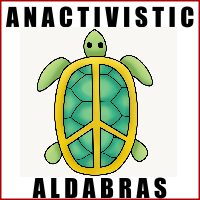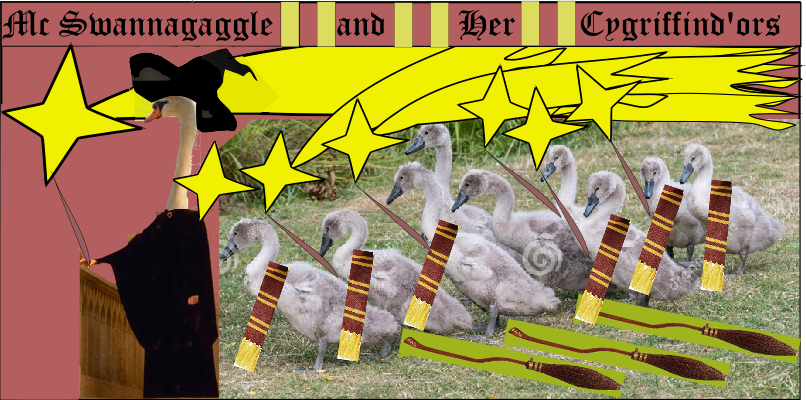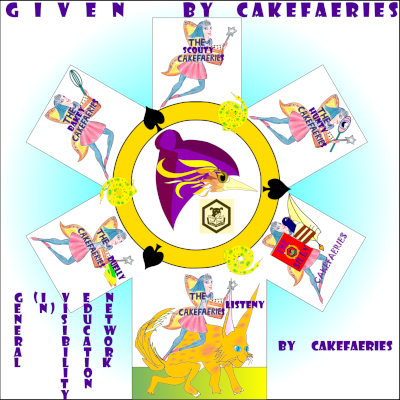

Visit Socbridge for our and others' Society Stalls open All Year Round! Including timetable of Squashes All Year Round. And a timetable of Meetings for Greeting Newcomers and Beginners All Year Round.
This Lent, we release Scav Hunt Items Lists every couple of weeks, each consisting of 30 to 50 Items :)
These Items are things to find, and/or act out, and/or draw... A few involve interacting with other teams, or solving puzzles. Some items are subject related, college related, book or film related, and a range of unusual objects.
Past examples include most unusual flavour of chocolate, processions with potato batteries, pipecleaner versions of James Bond gadgets, and building a scale model of Minas Tirith out of a portion of fudge. We chain-write silly stories one line at a time, and have developed means of chain-writing further things, like with pictures or set to music :)

To sign up to participate, whether as an individual or as a team, by emailing cakefaeries *at* gmail.com, with:
--- Name
--- Team and/or Individual Pseudonym
--- If signing up individually or in a group of less than 5, whether you'd like us to look for further team-mates for you.
--- Flag of Allegiance (if any)
Team names are meant to be anonymous; silly team names get 10 points; providing your own flag gets 2 to 4 times that amount. Flags of Allegiance can be a) Safer Space People Flags, b) Ally Flags, or c) Personal/Group Insignia. We have a large database of a) and b), of which our main website (and the below tables) have samples.
Team names tend to be one or both of Silly and Descriptive. See this term's scoretable and the Archive of Past Hunts Below for examples :)
See here forThe CakeFaeries' Safer Spaces' Scavenger Hunt Rules, including Safety and Conduct Rules all active participants in the Scavenger Hunt must read...
Main rules change from previously:The scavenger hunt is no excuse for breaking social distancing or other Covid-19 lockdown regulations.
1.1 Pun a pineapple.
1.2 OutMeme a Wizard
1.3 Puzzle a Puzzle.
1.4 Draw a Symphony.
1.5 Set an Oil Painting to 3:4 Time [5 each].
1.6 Describe a Penguin and a Helicopter outdoing each other for silliness [5 per 1-up, 100 max].
1.7 Create a Virtual Pimm's tent to spend part of Virtual Mayweek in [5 points per detail, 50 max].
[Involve your Virtual Umbrella, or your Halo, to Score Double.]
2.1 A picture of a cat... [5 pts]
2.2 with a kindly caption [5 pts]
2.3 with a statement of the cat's mood at the time [5 pts]
2.4 per picture of a cat argued to be in a conceptually different mood from all other pictures of cats you have previously presented: [10pts each: no upper limit]
2.5 Conceptually distinct cat puns: [3 points each, no upper limit]
2.6 Superlatives on: cutest cat, cat most fitting stated mood, cat least fitting stated mood, cattiest cat.
[Superlatives score 5 x (number of teams) + 6 for the best entry, and 6 less than that for each subsequent one]
Provide your team with:
3.1 A Name [10 pts]
3.2 A Banner [20 pts]
3.3 A Mascot [30 points]
3.4 A Motto [10 points per language the, or part of, the motto is in]
3.5 A Cause [5 points per argument, 50 max]
3.6 A Finishing Move in the context of the team being a Battle Robot [20 points]
3.7 An Anthem [40 points, 400 if with original music]
3.8 Safer Space Flag Affiliations (because that's what many of us do, not for points)
3.9 A Perspective [40, cf V for Vendetta for why this is more than a point of view :) ]
3.10 Superlatives on: best lyrics, worst lyrics, silliest lyrics, cutest mascot, most themed mascot, least themed mascot, most awesome battle robot concept. Most arcane language, language that takes the longest for other teams to guess, most ancient swear (in the finishing move, motto, or song).
This task is simple (to state! if not to do! a bit like 'retrieve the egg' in the Goblet of Fire, on account of the dragon guarding it...)
4.1 Respiratory masks: what is their relevant parameter space?
[100 points for each reasonably independent parameter honestly and reasonably convincingly argued to be relevant in this regard. Superlative on tightest upper and lower bounds on a parameter. Bonuses for experimental design. Heavy bonuses for safely carrying out relevant, if basic, experiments concerning masks. Probably wait until lists of relevant parameters are posted on the website before conducting such experiments. And, yup. That's the kind of thing some Duellies are applying their strategic duelly skillz to at present :)]
5.1 Per viable improvement suggested for our lego scale model of Downton Abbey's saloon (!) [5 pts, 100 max]
Here is the current state of Downton:
5.2 Per detail of how to build an 8000-brick replica of Winterfell
[5 pts per partition -room or courtyard- at the level of pencil-drawn plans: limited only by what 8000 bricks can do and what Winterfell realistically contains.]
[10 points per decorative bauble, 100 max]
[20 points per wall texture style]
[40 points per necessary use of engineering acumen to ensure the large-scale structures being built are stable]
[Superlatives on: best lego design for a heart tree face, a library on fire, an archery butt, a direwolf figurine, a Giant-sized hole in the gate, a statue of Lyanna, Gendry's temporary forge, Lewin's rookery, Hodor, the glass gardens, a wolf banner, Bran's bed, and whatever you please from Old Nan's stories. In the event of some of these being submitted using pieces we do not possess, the superlative counts a second time over those using our existing set of pieces.
These are not independent items, but rather how each kind of cakefaerie can score double.
Bakey-double: item in the form of a cookie, cake or decoration.
Duelly-double: item presented with reference to the elementary stratagems.
Kindly-double: item presented in a form useable as a Kindly Note.
Silly-double: item presented in a form useable as a Silly Note... about Cats.
Buildy-double: item built out of Lego.
Listeny-double: item related to Improving Quality of our or other Support Groups.
Scouty-double: item has Its Own Little Wand.
Hunty-double: item presented with Epic Music or in the form of a Meme.
7.1 About sound [3 points per line, 6 points per interestingly distinct onomatopoeia: 50 max each]
7.2 About worlds and planets [3 points per detail, 6 points per significantly distinct made-up word: 50 max each]
7.3 About a Celebration
7.4 Make up a story, or elements for a story, about the Bunnies and Bears... in the following Bakey photo :)
7.5 Creative Crochet Crochet us a Cat [100 points per cat, 9 Lives Max]

8.1 Suits of cards that an ace could be an ace of [3 each, 50 max]
8.2 Benevolent words containing the string of letters "ace" [3 each, 50 max]
8.3 Draw your own Ace Unicorn [10 for a sketch, 50 for a full picture]
8.4 Express support for Aces (Asexual people or, more generally, Asexual spectrum people including e.g. Grey, Demi, and AceFluid people) [50 + 10 for one sentence each on Grey, Demi and AceFluid people, showing you understand what these are.]
8.5 Why have many Aces chosen to act through Visibility and Education Networks?
8.6 Why are Visibility and Education Networks also seen as suitable by local Survivors and Survivors of Bullying?
8.7 Which populaces required our own such to be generalized to (In)visibility and Education Networks?
8.8 Show the Judges you know what SafeOut means [40 points per team-member]
8.9 Propose activities for a first Ace meet-up in person [10 each, 50 max]
8.10 Propose online, and yet not social media, icebreaker activities for Ace newcomers [10 each, 30 max]
8.11 In many places that are Ace-Aware, Aros are also included. At ours, so are Adominant, Asadistic, Abondage, Amasochistic, Asubmissive and Adiscipline people. Which of these last six terms can be paired up into opposites? And which really contain both sides of an opposite pair? [10 points per pair or splitting]
8.12 A Total Ace is a person who is A-everything that is normatively or non-normatively associated with sex and romance. Explain how this might in some cases extend to commitment, loyalty and being put first, but it might not in other cases. [10 points, 20 max each way]
8.13 Is the correlation between being (more or less) a Total Ace and being A- in further directions such as Apolitical, Anactivists, Abureaucratic, Ajournalistic, Conscientious Objector, No-Contact with aggressive people, pushy people, authoritarians, gatekeepers ... ? [10 points per suggestion: 50 max, and 10 points for a sentence outlining what you think each unusual word in this Item mean].
8.14 Many (more or less) Total Aces put an uncommon amount of interest in activities that almost the entirety of the rest of the population don't take as seriously. Give examples (actual, fictional or hypothetical: 10 points, 6 points, 3 points each up to totals of 30, 60, and 100. Note: this includes identifying Aces in Fiction, including moreover what they take seriously and/or are uncommonly good at).
8.15 Quite a lot of these Total Aces have moreover been personally attacked for being interested in, good at, or uncommonly often involved in such activities. In which ways may this have a similar effect to homophobia or transphobia? [10 points per conceptually distinct oppression or consequent mental health issue, 50 max.]
What can be done as regards Total Aces having places where they can do activities they are uncommonly interested in, both with at least some other people and in the absence of anyone who aggresses or resents the Total Ace, or who rubbishes the activity? [10 points per activity accommodation, 10 points per effective recruitment policy for further participants, 10 points per relevant secuity feature, up to 30 max on each.]
8.16 Why do (at least locally) many Survivors and Survivors of Bullying wish for specifically-Ace Allies? What other features in this Items List Section 8 are part of the reason for these, and which point to further types of Allies that Survivors and Survivors of Bullying may find approachable and helpful? [up to 1000 points will be awarded for sufficiently original, helpful and committed answers.]
List 9 [Hunty Faeries: Virtual Mayweek]
Set up a virtual:
May Ball
Cardboard Boat Race
Punting trip to Grantchester
[5 points per detail each; 50 max on each]
List 10 [Silly Faeries: Bates-Off]
The cast of Downton Abbey and of Bates Motel have entered competition as to which say `Bates' more often...
10.1 Say `Bates' [1 point]
10.2 Say `Bates' in a Motel context [5 points, 10 max]
10.3 Say `Bates' in a Downton Abbey context [3 points, 10 max]
10.4 Say `Bates' in a context the could plausibly be either [5 points, 500 max].
10.5 Superlative: Write a text in which the word `Bates', grammatically correctly, features the most frequently. It must be at least 20 words long.
10.6 Write a text in which the sound `bates' appears most often [and 3 point per conceptually distinct use, 200 max]
10.7 Write a sketch in which Downton and Model uses alternate in an incontrovertible manner [5 points per pair, 1000 max]
List 11 [Silly Faeries: Fringe]
In Fringe, Sometimes-Mad Scientist Walter Bishop, played by Denethor of Gondor, encounters an alternative reality including an Evil Version of Himself as Walternate: Secretary of Defense. Both of them have a lot of Daddy Issues, since there is only one copy of their son - -B-o-r-o-m-i-r- Peter Bishop - between the two realities. Each Alternative Reality also has its own copy of super-agent Olivia Denham (Walternate's is the Evil version: Fauxlivia). The show's alternative reality is easily recognized because Zeppelins Became a Thing there.
11.1 Per Walter suggested or distinct characterization thereof [4 points, 50 max]
11.2 Per Olivia likewise [4 points, 50 max]
11.3 Per Zeppelin likewise [4 points, 50 max]
11.4 Design a further alternative reality mini-episode based on getting one's Walter's mixed up, or Daddy Issues [2 points per detail, 1000 max, 20 points per significant plot point, 25 max]
12 Utopia and Dystopia [Hunty CakeFaeries, Listeny CakeFaeries]
12.1 Following on from Fruitopia and Zootopia :), make further puns on the words utopia and dystopia [5 each, 50 max]
12.2 Give examples from fiction of dystopias disguised as utopias [3 each, 50 max]
12.3 Give examples from fiction of utopias disguised as dystopias. [10 each, 20 max]
12.4 Give substantially conceptually different examples of utopias and dystopias. {5 each, 50 max}
12.5 Conceptually classify utopias and dystopias [up to 500 points will be awarded for sufficiently original, committed and nontrivially exhaustive classifications]
12.6 Which philosophers, or philosophical works, are particularly associated with utopias and dystopias? [5 each, 50 max]
12.7 Our Safer Spaces' own writings about an Utopia can be found here
Propose items for our as-yet unwritten section "The Environment" [10 each, 50 max].
Ditto for "what Counselling Services might look like by 2040" [10 each, 50 max].
12.8 What about all the topias between these top and bottom extremes? [10 points for naming the concept of a middling topia. 2 points per example, 50 max. Up to 500 points for a conceptual classification of these. Bonuses for reasonably substantiated suggestions as to what the space of topias may be, from a mathematical point of view.]
As further samples, here are last term's Items Lists :)
Items List :)
Items List , consisting of 'Write a Kindly Note', 'Write a Silly Note', 'Wholesome' sections, and 'Provide us with a Team Banner' as a bonus item :)
Items List :)
ARCHIVE OF PAST HUNTS
| TERM | WINNER | FLAGS OF ALLEGIANCE | RUNNER-UP | FLAGS OF ALLEGIANCE |
|---|---|---|---|---|
| Michaelmas 2019 |
MAJOR LEAGUE ALL-STARKS
28374 points Cake-r-us Mushroom-free badgers Have completed all sections so far Deep points about similarities and differences between Don Quixote and the poem in Section A. Kindly and Silly notes ideas. Wordbuilding Worldbuilding Figured out that Lego Downton Abbey's floorplan could only have one free parameter. Laughed gently when the parameter was set to 1 and this resulted in there not being enough space to lay out the main staircase. Thereafter, the parameter was set to its most accurate rendition (modulo the discreteness of Lego blocks). Note: our Lego Downton Abbey is built in proportion to Lego figures: it's the same size relative to Lego figurines, such as Lego Mr Bates, as the actual Abbey (Highclere Castle) is to people. Our Lego Downton Abbey is the Lego-realizable fundamental cell, meaning a square quarter, as opposed to the non-Lego-realizable triangular half of that. More specifically, it is the front-right quarter, so as to include a) the main entrance, not only for its own heraldic sake but also because Lady Sybil's room is above that; her carpet is in the form of the Red Cross, so anyone entering is Under the Aegis of the Red Cross (another scav hunt item). b) The iconic dining room. With: the most architecturally interesting portions doubled-to-whole: main staircase: all red-carpeted, bannistered, and Set About with Ancestral Paintings, and quadrupled to whole: the Saloon that was a monks' courtyard centuries before the house. Quadrupling the Saloon, they noted, would permit a 1-wall sample of the Library and of the rooms along the back of the house (music, drawing). One-Up Lego Hogwarts Award for 'the Saloon needst be on hinges for accessible interior decorating and more display positions. 3 of its faces: dining room-and-entrance-hall, library, back rooms, can be bent into a straight line by these hinges. While the fourth side splits by a separate hinge so as to see and get into the main staircase. The entrance hall to dining room interstix is also to be articulated.' Lego Barry Award for designing Lego Downton Abbey's facade, using 90 degree turns, beige platforms and then smooth surface bricks. Figured out how to give Lego Downton Abbey's Saloon a glass ceiling (inspired by the Glass Gardens of Winterfell, are you?) And 200-point bonus for insisting Butterfly-Sybil be perched {\it on top of} said glass ceiling, 'as a future 3-time Prime Minister'. Incidentally, the slanted glass ceiling is on hinges. It is based on the shop window piece being the same width as the 'unit lattice cell' of the Abbey (6 squares). Gave a comparison between wholesome and mindful :) Also gave an intersection between wholesome and 'their own lexicon of known icebreaker activities' :S Bonus points for giving a scientific subspecies name to each of the many pictures of Walruses judges have been presented with! |

|
The Future is Greeeeeen
Their Vanguard is composed of Pipecleaner Tortoises... Most outlandish suggestions for what 'wholesome' is :) Made Lego Downton Abbey's paintings be alive... Distorted history justification for the form taken by Living Painting of Charles I in Leg Downton Abbey's dining hall. Installed an 'neverending hedgerow of violets' in honour of Granny. Bakey, Bakey, Duelly, Bakey... If at First you Don't Succeed, Try Again award. 8612 points |

|
| Mayweek 2019 |
DRAW ME A SHEEP
Doh, 'Trinians, Nihilism is in fact unrelated to the River Nile! Medic-Buuugh-uck-uck Terminated with extreme prejudice Copperhead Down Chekhov's Hanzo Blade beats Chekhov's Salt-Loaded Shotgun. Californian Mountain Raptor with a Medical Eyepatch subdued. Anacondas treated with respect (not on hitlist of snakes; those are all venomous) Crazy Eight Hundred and Eighty Eight fought to a standstill with Lego college crests on the outside and Lego safer space crests on the inside. Reverse Ultimate Showdown, ended by Ms Kiddo in a Blood-Soaked Golden Sweater... Ending with "Kill Tom" (Lehrer). 17842.8 points Silliness Tactical Acumen Girl Power. Transformation of the Bride, with Transformers: Robots in Disguise (as College Gates) flowing inevitably into the Charge of the Rohirrim into the Discworld Elephants, Descent of the Witch King, and culminating in Eowyn's heroism. Chekhov's Hanzo Blade fuliminates the nominal section, assisted by Cadsuane's Hair Ornaments one-upping of Chekhov's Earring! Dinosaur Extinction effectuated, Discworld done. Dodecahaedron, passable. Icosahaedron and buckyball are somewhet coarse-grained Death Stars. With 2 or 3 lasers to 1-up Chekhov's Death Star. All four Listeny Sections down. All three Duelly sections down. Both Lego sections (Art and Engineering) completed, with a good spinor made out of Lego :S but only a terrible dodecahaedron, icosahaedron, buckyball or Mandelbrot set. Largest Witch King's flail by all criteria except pure length (that one goes to Spartacus' item doubling as longest bridge ^,_,^ ). 'Redoing Lobachevsky in 10 other countries' was done here in Wonderland, the Mirror World, the Discworld, Jurassic World, the Mr Men Universe, the Gulliver's Travels Universe, the Little Prince's Universe, Flatland, and Teletubbyland. And, of course, the Universe Inside John Malkovich's Head. [Is plagiarism even possible in a Universe in which everybody is John Malkowich? Paradox points!] Female Superheroes Only version of the Ultimate Showdown. Completed every section, sometimes minimalistically, and excluding the first section that was 1000 points max, for which they just got the 1000 points without section completion. To the obvious music our lyrics start with... Sheeeeeeeeeeeeeeeep triple silence draw me a sheeeeeeep triple silence said a little voice a lil voice a little voice a lil voice a little voice a lil voice a little voice a lil Prince was standing-there -Extraordinaire!- draw me a sheeeeeeeeeeeeeeeeeeeeeeeeeeeeeee- eeeeeeeeeeeeeeeeeeeeeeeeeeeeeeeeeeeeeep! aaaa sheeeeeeeeeeeeeeeeeeeeeeeeeeeeeee- eeeeeeeeeeeeeeeeeeeeeeeeeeeeeeeeeeeeeep? ... |

|

9882.2 points Cygriffind'or Wins! Major carnage with Global-Analytic park: the Items Section on Dinosaurs cloning Mathematicians going badly wrong for the Dinosaurs. Including group picture of the Bourbakis in T-Rex form :) Section completion on 'Chekhov's Arsenal' All four Listeny sections presented All three Duelly sections down. Cheapass Transport Section Takedown. Breaking Bad as a Chekhov Paradise, with some Game of Thrones and Harry Potter support. Our King was Poincatheah, as slowly murdered by the Bourbakis using a pictureless, applicationless series of Mathematics Textbooks from the 1950s onward. Featuring a mixture of Mathmos, T-Rex Hybrids, Scav Hunt Team Names, and actual Kingkiller Chronicles characters. The Name of the Wind would appear to be 'Topology' and with plenty of pictures and applications too. |

|
| Lent 2019 |
BLACK RIBBON ARMY
Lady Margolotta and HER Temperance League Abreme una brecha, Elena! Not Blood but Points Point-y Teeth ^,-,^ Sumptiousducklacrimosastylisticmetrinomipointylucratiarpeggios The Flowstone Commandress The Uuuuuuberwald Wolfimozartines Troupe The Egg of Time turns, and eggs curdle and pasteurize, leaving oo-maloderous avian egg products that become tortilla-legends. Which fade to hardboiled myth, and even hardboiled myth is long scrambled when the ova that gave it birth is laid again. In one egg, called the free-range-class-1 by some, an egg yet to curdle, an egg long past its best-by-date, an oo-maloderous wind rose in the four-eggs called Eggraham's Wood. The wind was not the egginning. There are neither egginnings nor most-rotten eggs to the scrambling of the Egg of Time. But it was an egginning. If Bond Girls are Pond Pens, some of them could also be Exploding Pens! Son Gia Cent Mille e Tre :P 100003 points |

|
SWANDUCT UNBECOMING OF THE ARCANUM
alias THE SWANTASTIC FIVE alias SWANNE WITH AN `E' alias Village of Fowl Devotees alias IF WE COB-ORGANIZE THIS NEXT TERM, WE'LL KEEP SCORE TO 3 CYGNIFICANT FIGURES ONLY! alias SWAN GIOVANNI, A CYGNAR TE... alias COSCOROBA NELLIE alias TUNDRABALL alias THE WORLD IS NOT PENOUGH alias OCTOBUSKY alias COBSINO ROYAL alias Stun Gas Cygnarette alias TERESA DI VIZCYGNO alias MISS MONEY*PEN*NEY alias PENSEPHONE PROUD alias Xenia Penontopp alias around 400 other things, including egg puns on most of the named characters from the Wheel of Time series(!) 60766 points |

|
| Michaelmas 2018 |
WINTERFELL
SCORE: 36294.4 points |

|
SPARTACUS
I am Spartacus, and so is my College Cat! SCORE: 17381.4 points |

|
| Easter 2018 |
SPARTACUS
|

|
Avocado The Iridescent Bernard | * |
| Easter 2017 | A Supply and Confidence Deal between Lord BucketHead and the Inanimate Carbon Rod | * | * | * |
Other past teams' names include "The Boom Squad", "Purple Clouds", "The Fantastic Five", " Ducklings of the Apocalypse", and "The Bermuda Pentagon" :)
